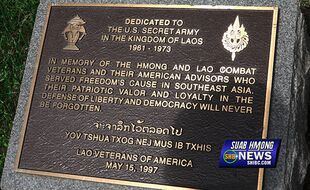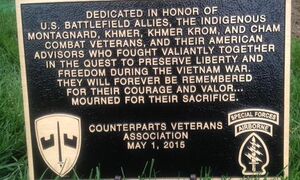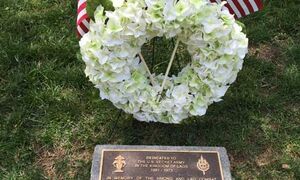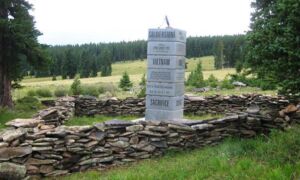Memorialization of Indigenous Southeast Asian Comrades of the U.S. During the Vietnam War
Introduction
Most people assume that indigenous people are oppressed minorities that are always mistreated and overlooked. However, these monuments show that the treatment of indigenous people largely varies based on the location and culture of the surrounding community. In this digital exhibit, I will argue that although indigenous groups in Southeast Asia have often been persecuted within their homelands, many have garnered some level of respect and admiration in the U.S. through their contributions during the Vietnam War. The monuments within this exhibit pay homage to the sacrifices made by indigenous groups in Southeast Asia during the Vietnam War by acknowledging and bringing awareness to their involvement.
History
Indigenous Montagnard Involvement during the Vietnam War
The role of the indigenous Montagnard people of the Central Highlands of Vietnam in assisting U.S. efforts against North Vietnamese communist forces is not widely known. Although many have a limited view of key players during the war, which includes the North Vietnamese, the South Vietnamese, and the U.S., the Montagnards were another major player in the war. The Montagnards, an indigenous population that is ethnically distinct from the lowland Vietnamese population, had a history of conflict and persecution by the Vietnamese government for their cultural and ethnic differences (Onion). Much like the early views of European colonizers of the Americas, the Vietnamese government viewed the indigenous Montagnards as “primitive” savages. After the American Special Forces moved into the Vietnamese mountains, they formed an alliance with Montagnards whose homes were in the area. The Montagnard comrades were vital in aiding U.S. forces in a terrain that was unfamiliar to U.S. soldiers.

A Painful Legacy
Unfortunately, after the Vietnam War, Montagnards continued to suffer from the persecution of the Vietnamese government, with their repression even being exacerbated because of the Montagnards’ known role in aiding the U.S. According to an article by the Los Angeles Times, a former Montagnard paratrooper, Uoh, states: “To go over there, to the U.S., that’s what the Americans promised" (Dunst). However, the reality was that it would be at least another decade before the U.S. resettled any Montagnards, and even then, the resettlement was extremely limited, with a majority of former Montagnard soldiers remaining under persecution and repression in Vietnam. To add salt to the wound, there have since been memorializations of the North Vietnamese army in Vietnam, who were the direct foes of the Montagnard soldiers.
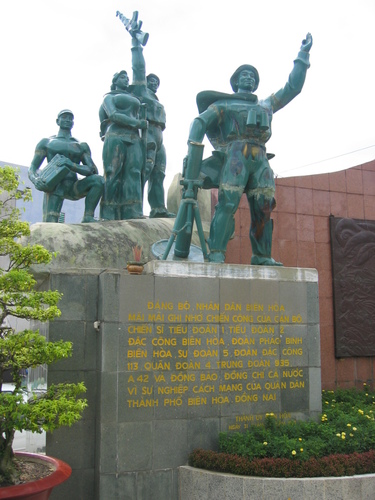
Memorialization and Memory Through Monuments in the U.S.
In the decades after the Vietnam War, there have since been new dedications to those who chose to stand by the U.S. during the conflict. These memorials include monuments placed in the Arlington National Cemetery, such as the Montagnard Counterparts Veterans Association Memorial and Hmong and Lao Memorial, along with standalone dedications such as the Soldierstone memorial which stands in a seemingly random place in a remote Colorado mountain. Ultimately, these memorials attempt to bring awareness to the pivotal roles that many indigenous Southeast Asian peoples played in aiding U.S. anti-communist efforts in Vietnam, while providing a marker to officially acknowledge their significant contributions and sacrifices.
The Montagnard Counterparts Veterans Association Memorial recognizes the service of those dubbed “The Forgotten Army” during the Vietnam War. The indigenous populations represented in the memorial are described as combat veterans who “fought valiantly” to preserve liberty. The memorial consists of a simple plaque with an inscription honoring indigenous populations, along with symbols representing supporters of the memorialization, such as the U.S. Army's Airborne Special Forces.
The Hmong and Lao Memorial also commemorates the Hmong and Laos veterans who contributed to U.S. efforts during the Vietnam War. The indigenous Hmong people lived in the mountains of Vietnam and Laos, and along with the Laos people, aided the U.S. in the CIA’s “Secret War”. The memorial takes on a similar form as the Montagnard Counterparts Veterans Association Memorial, as a simple plaque with inscriptions and symbols detailing its dedication to Hmong and Laos combat veterans.
The Soldierstone Memorial was a unique memorial that was planned and dedicated by a sole individual: Lieutenant Colonel Stuart Allen Beckley. Lt. Beckley was a Vietnam War veteran who wanted to honor the lives lost of former allies who he felt were, in his words, “unremembered friends from our Indochina experience”. During the final years of his life, Beckley worked meticulously to plan the inscriptions for the memorial, along with scouting out the perfect location to place the memorial. Beckley's vision was to find a place where unknowing travelers would randomly stumble upon the memorial and be able to appreciate it among the peace and quiet of the remote, secret location.
A YouTube video from the channel “Marlys Shuda” shows a person’s experience accidentally stumbling upon the Soldierstone Memorial while on a cycle. The video illustrates the serene atmosphere surrounding the memorial and gives a sense of the careful planning and design surrounding the memorial. The Memorial includes thoughtful quotes about pain and loss along with textual inscriptions in a variety of languages to represent the diverse backgrounds of U.S. allies during the conflict.
Memorials and Meaning
The above memorials were made to honor the lives of indigenous individuals lost or forgotten after providing significant contributions to U.S. efforts in the Vietnam War. Some memorials, like the Hmong and Lao Memorial, were significant in that they represented the an official acknowledgement of secret U.S. military efforts such as the "Secret War", and as such, finally gave the forgotten allies their much needed, long-deserved recognition. Other memorials, such as the Montagnard Counterparts Veterans Association Memorial, provided the publicity and public awareness necessary to encourage government officials to initiate policies to provide aid to former allies that have been forgotten and neglected. Uniquely, some memorials may just be made to quietly exist and honor lost comrades in peace, such as Silverstone. According to Laurie Gries in her book "Still Life With Rhetoric", the interactions of both human and nonhuman entities has allowed these monuments to transform across their lifetimes, and take on their own forms of "thing-power". Regardless of the purpose or thing-power that the memorials take on throughout their lifetimes, the existence of these memorials and the entities and individuals that pushed for their creation illustrates a level of respect and honor towards some indigenous groups of Southeast Asia. If not out of an enjoyment of their diverse and distinct cultures, these war memorials show a respect for their commitment, and brave sacrifices for the U.S.
Works Cited
Dunst, Charles. “Vietnam War Left a Painful Legacy for Indigenous Minority That Fought alongside U.S.” Los Angeles Times, Los Angeles Times, 21 May 2019, www.latimes.com/world/la-fg-vietnam-war-allies-20190521-story.html.
Gries, Laurie E. Still Life With Rhetoric. University Press of Colorado, 2015.
Herr, Jade. “Laos, Hmong Veterans Honored At National Ceremonies At Arlington National Cemetery, Vietnam Veterans Memorial.” Hmong Times, 10 July 2018, hmongtimes.com/laos-hmong-veterans-honored-at-national-ceremonies-at-arlington-national-cemetery-vietnam-veterans-memorial/2686/.
Hood, Grace. “The Story Of Soldierstone, A Mysterious War Memorial In The Colorado Wild.” KUNC.org, hiddencolorado.kunc.org/soldierstone/.
Mclaughlin, Nancy. “'THE FORGOTTEN ARMY'.” Greensboro News and Record, 2 June 2015, greensboro.com/the-forgotten-army/article_79770381-b62f-5bc3-9427-b7afb79ba66b.html.
Onion, Rebecca. “A Forgotten Chapter of Vietnam: How an Indigenous Tribe Won the Admiration of the Green Berets-and Lost Everything Else.” Slate Magazine, Slate, 27 Nov. 2013, slate.com/news-and-politics/2013/11/the-green-berets-and-the-montagnards-how-an-indigenous-tribe-won-the-admiration-of-green-berets-and-lost-everything.html.


